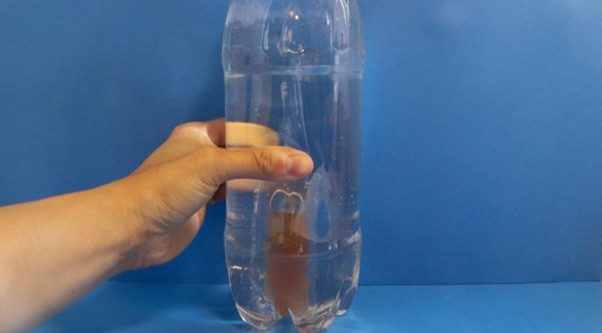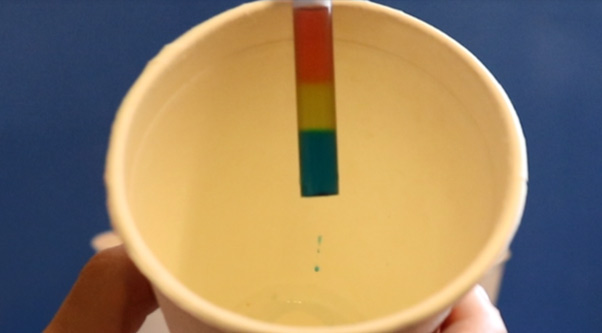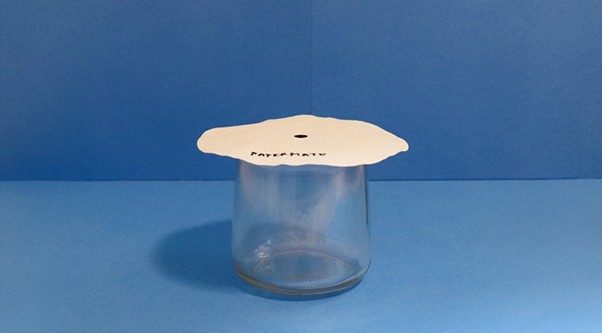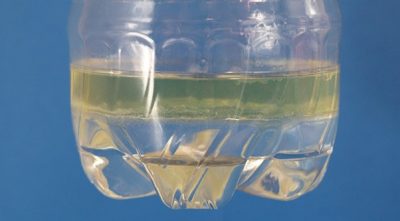
Question to investigate
How does the size of the air bubble change as you make the object sink and float?
Chemistry concepts
- Density describes substances based on much mass they have in a certain volume.
- Less dense solutions and objects float on top of solutions of greater density.
Activity logistics
- Ages: As written, this activity is suited for ages 8–12.
- Time: 15–30 minutes
Be safe
- Do not eat or drink any of the materials used in this activity.
- Work with an adult.
- Read and follow all directions for the activity.
- Read all warning labels.
- Wear Personal Protective Equipment (PPE), such as goggles, safety glasses, or gloves.
- Tie back long hair, roll up sleeves, and secure loose clothing.
- Be sure to clean up and dispose of materials properly when you are finished with an activity.
- Wash your hands well before and after the activity.
Disposal: Pour the liquids out of the bottle through a strainer or colander into a bowl. Remove the solid pieces and either wash to keep or throw them away. Use a paper towel to absorb the liquids and place the oily wet paper towels in the trash. Avoid pouring oil down the drain of a sink or toilet because oil can clog pipes! Either wash and reuse the bottle or place it with the recycling.
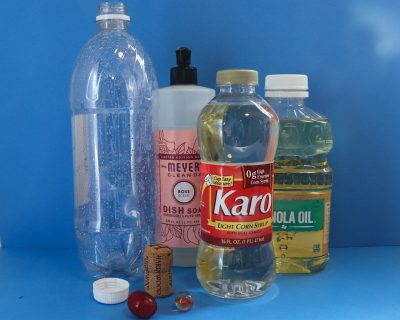
What you’ll need
- Honey or white corn syrup
- Cooking oil or mineral oil
- Water
- Dish soap
- Glass marble
- Grape
- Piece of cork
- Tall clear bottle with cap
Procedure
1. Pour honey or corn syrup into your bottle until the level is about one inch high.
2. Pour the same amount of cooking oil slowly down the inside of the bottle. Make observations.
3. Pour the same amount of water slowly down the inside of the bottle. Record your observations below.
4. Tightly cap the bottle and shake. What happens? You may have to wait for the liquids to settle.
5. Make a guess as to what will happen when you add the dish soap. Then pour the same amount of dish soap down the inside of the bottle to see if you are right.
6. One by one, drop the marble, grape, and cork into the bottle. You may have to cut these objects for them to fit through the bottle opening, or transfer your liquids to a glass or jar. What happens to each of these objects? What does this tell you about the density of each of these objects? Which of your solid objects is the most dense? Try some other small objects to find out about their densities.
What did you observe?
Download the worksheet to record your observations:
- Which liquid is the most dense: corn syrup, cooking oil, or water?
- What happens after you cap and shake the bottle?
- What happens when you add dish soap?
- What happens when you add the objects to the bottle?
How does it work?
The liquids do not mix, but separate into layers. The oil floats on the honey; the water sinks underneath the oil, but floats on the honey.
Each of the four liquids has a different density, which is a way to describe substances based on much mass they have in a certain amount of space they take up, the volume.
The oil is the least dense liquid, so it floats on the other liquids. Honey (or corn syrup) is the most dense of the three liquids, so it sinks to the bottom. The liquids layer according to their densities. From least dense to most dense, the liquid layers are oil, water, dish soap, and honey. These three liquids do not mix easily, so when you shake the bottle, the liquids remain in layers
The solids will float on the liquid layer that is more dense than they are. All three items (marble, grape, cork) each end up in one of the three liquid layers. The cork is less dense than oil and floats on the oil. The glass marble is more dense than honey so it sinks to the bottom of the glass. Where did your grape end up?
What else can you try?
Try this experiment with other liquids likes like vinegar, syrups, ketchup, and peanut oil. Make a guess before you start as to how they will layer.
References
This activity is adapted from an activity that originally appeared in the Celebrating Chemistry issue for Chemists Celebrate Earth Day 2017, written by George Fisher, Ph.D.

